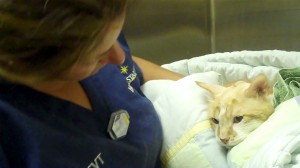-
Recent Posts
Archives
- October 2022
- August 2022
- May 2022
- March 2022
- January 2022
- December 2021
- September 2021
- July 2021
- June 2021
- May 2021
- April 2021
- February 2021
- January 2021
- November 2020
- October 2020
- September 2020
- June 2020
- April 2020
- March 2020
- February 2020
- January 2020
- December 2019
- November 2019
- October 2019
- September 2019
- June 2019
- March 2019
- February 2019
- January 2019
- December 2018
- November 2018
- October 2018
- August 2018
- July 2018
- June 2018
- May 2018
- April 2018
- March 2018
- February 2018
- January 2018
- December 2017
- November 2017
- October 2017
- September 2017
- August 2017
- July 2017
- June 2017
- May 2017
- April 2017
- March 2017
- February 2017
- January 2017
- December 2016
- November 2016
- August 2016
- July 2016
- June 2016
- May 2016
- April 2016
- March 2016
- February 2016
- January 2016
- December 2015
- November 2015
- October 2015
- September 2015
- August 2015
- July 2015
- June 2015
- May 2015
- April 2015
- March 2015
- December 2014
- June 2014
- May 2014
- April 2014
- November 2013
- September 2013
- August 2013
- July 2013
- June 2013
- May 2013
- March 2013
- January 2013
- November 2012
- October 2012
- July 2012
- December 2011
- November 2011
- October 2011
- September 2011
- August 2011
- July 2011
- June 2011
- May 2011
- April 2011
- March 2011
- February 2011
- January 2011
- December 2010
- November 2010
Categories
Veterinary Surgeons Perform Brain Surgery NJ
The Cutting Edge: Tales from “under the knife” at NorthStar VETS: 24 Hour Emergency Veterinary and Specialty Center in NJ
From pet emergency to the Operating Room (OR) Meet this feline tail: “Big Cat,” as he under goes a very challenging brain surgery.
Watch a clip from surgery here!
“Big Cat,” a 13-year-old cat presented to our 24-hour veterinary emergency room complaining about having trouble urinating, lack of appetite, feeling weak, and trouble getting around. His owner explained that sometimes when he walks his legs would just “give out.”
When he went to see his regular veterinarian his blood work, and x-rays were all
reported to be normal. Unsure of what the cause of Big Cat’s symptoms were, his vet sent him to see his friends at NorthStar VETS to check out the scoop. Upon his admittance to the veterinary referral hospital he received a work up that included more blood work, x-rays, an abdominal ultrasound and internal medicine consult was planned.
Big Cat’s blood work, x-rays, and ultrasound all proved to be normal. Big Cat was then diagnosed with a primary neurologic condition localizing to the cerebellum or cervical spine. An MRI was performed to determine the cause of his ataxia (dizziness) the cause of his ataxia was due to a large contrast enhancing mass in his brain. His options were only 3: Medical Management, Radiation Therapy, and Surgery.
Big Cat was placed on prednisone and improved to the point where he could walk on his own without any help however he was still having trouble emptying his bladder. Then, upon consult with a radiation oncologist it was determined that this mass, aka a meningioma would respond at such a slow rate that radiation would not be a viable option. Down to the last straw, Big Cat’s last hope was surgery.
And so it was written. A surgical plan between board-certified surgeons Dr. Laura
Culbert and NorthStar VETS chief of staff and surgeon Daniel Stobie began to formulate. Their plan: A suboccipital approach to the cerebellum to remove the tumor.
This is perhaps the most challenging intracranial surgical approach due to the small degree of exposure obtainable and to large venous sinuses that are present in this area. In addition, to the challenging approach are the challenges of anesthesia, so Dr. Reid Groman would assist here. Blood pressure and intracranial pressure would need to be precisely monitored. Blood loss, and blood oxygenation during surgery is also a large concern. During his surgery Big Cat was maintained on injectable anesthetics to keep blood pressure up and intracranial pressure down to minimize respiratory depression.
The surgery was performed and the tumor was successfully removed. Histopathology (examining of tissues to study the manifestations of disease) confirmed a cerebellar meningioma or a brain tumor. Big Cat successfully recovered over the next 4-5 days and his health greatly improved by the time of discharge from NorthStar VETS.
When he was rechecked Big Cat was able to walk with minimal assistance and is even acting more like himself, responding to his name, to affection and eating everything in sight.
This tail is just one of many tails that are saved and benefit from 24 veterinary emergency care at NorthStar VETS in New Jersey. Our hospital offers cutting edge technology, and board certified veterinary specialists to give your companion the best care possible. In the event of a veterinary emergency you can rest assured that we are here to help 24/7/365, just call 609.259.8300.
Stay tuned for more tales from “The Cutting Edge.”
This entry was posted in Pets, Veterinary Medicine and tagged 24 hour emergency vet, 24 hour vet emergency, 24 hour vet hospital, 24 hour vets, 24 vet hospital, allentown, animal emergency, avian, brick, cherry hill, clarksburg, dog emergency, exotics, freehold, hamilton, jackson, lakewood, Mercer County, millstone, Monmouth County, New Jersey, New Jersey Dog, nj, NorthStar VETS, Ocean County, pet emergency, princeton, robbinsville, toms river. Bookmark the permalink.






Leave a Reply